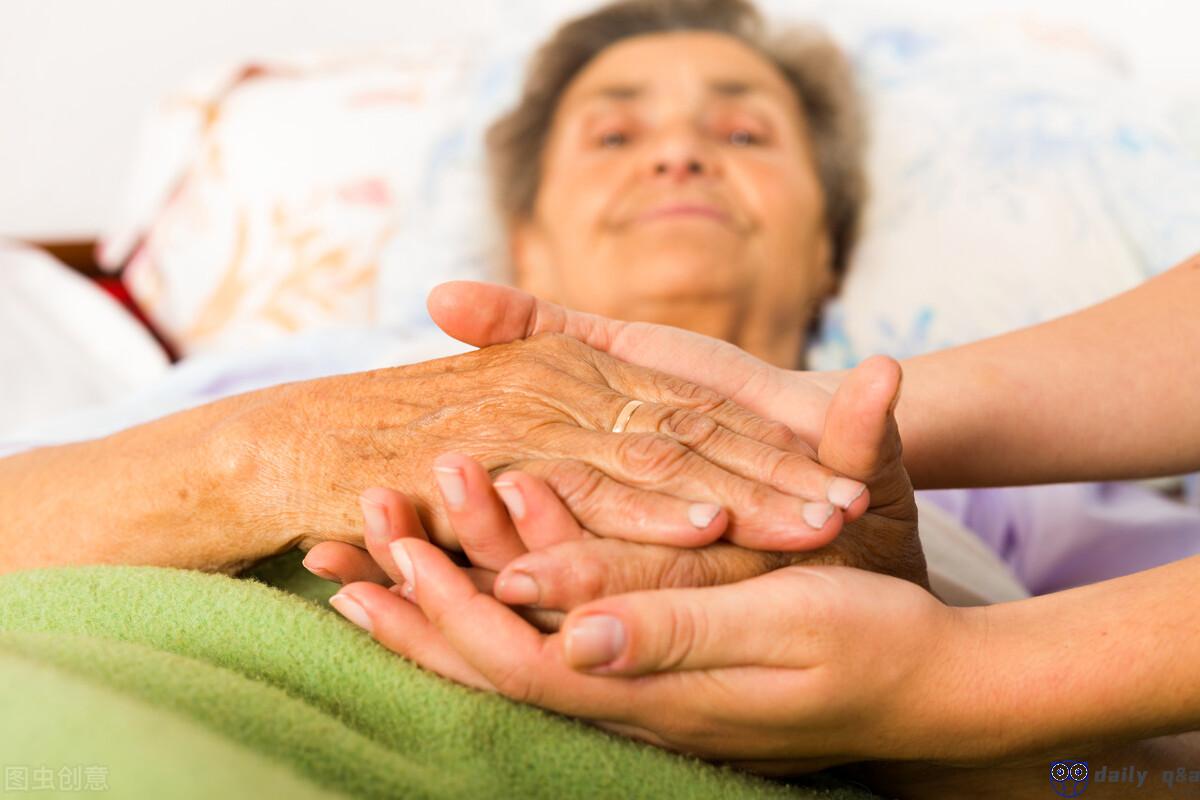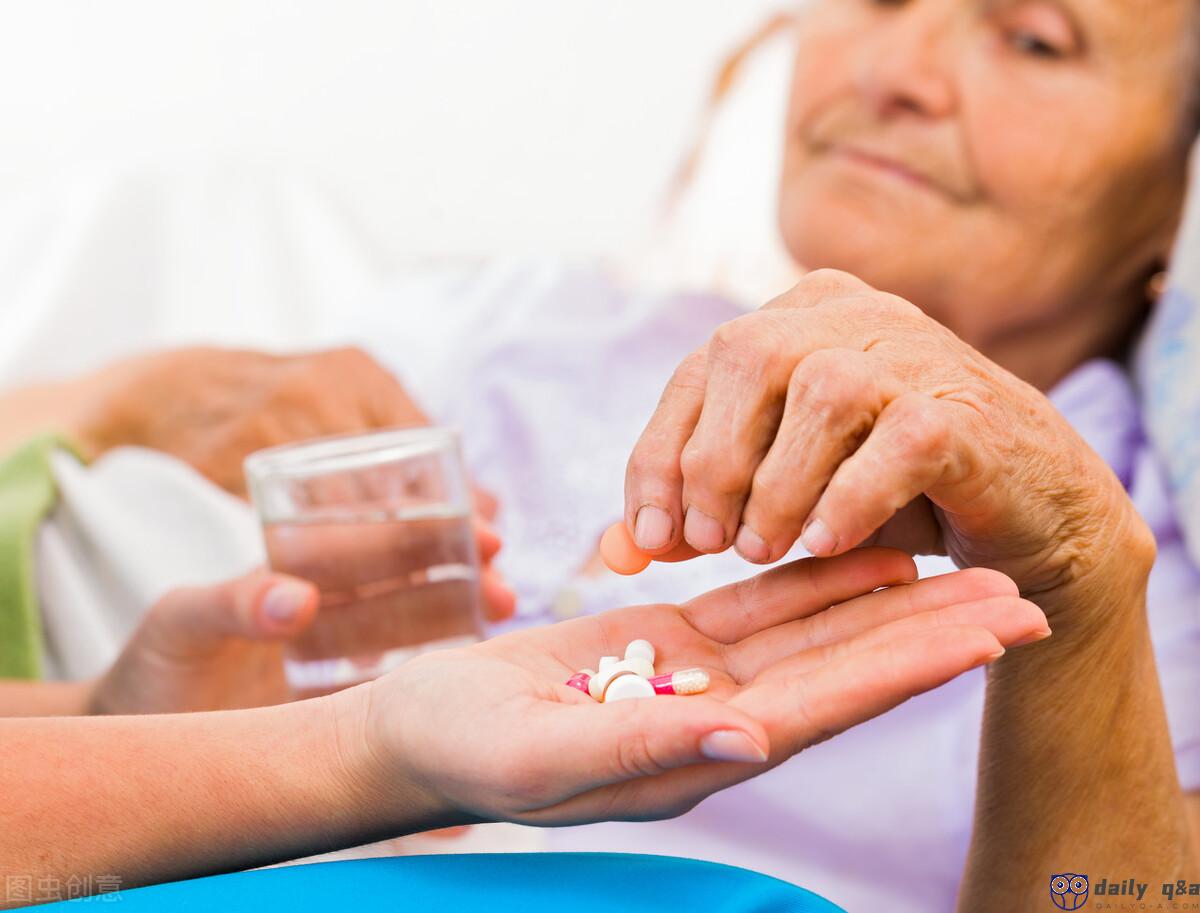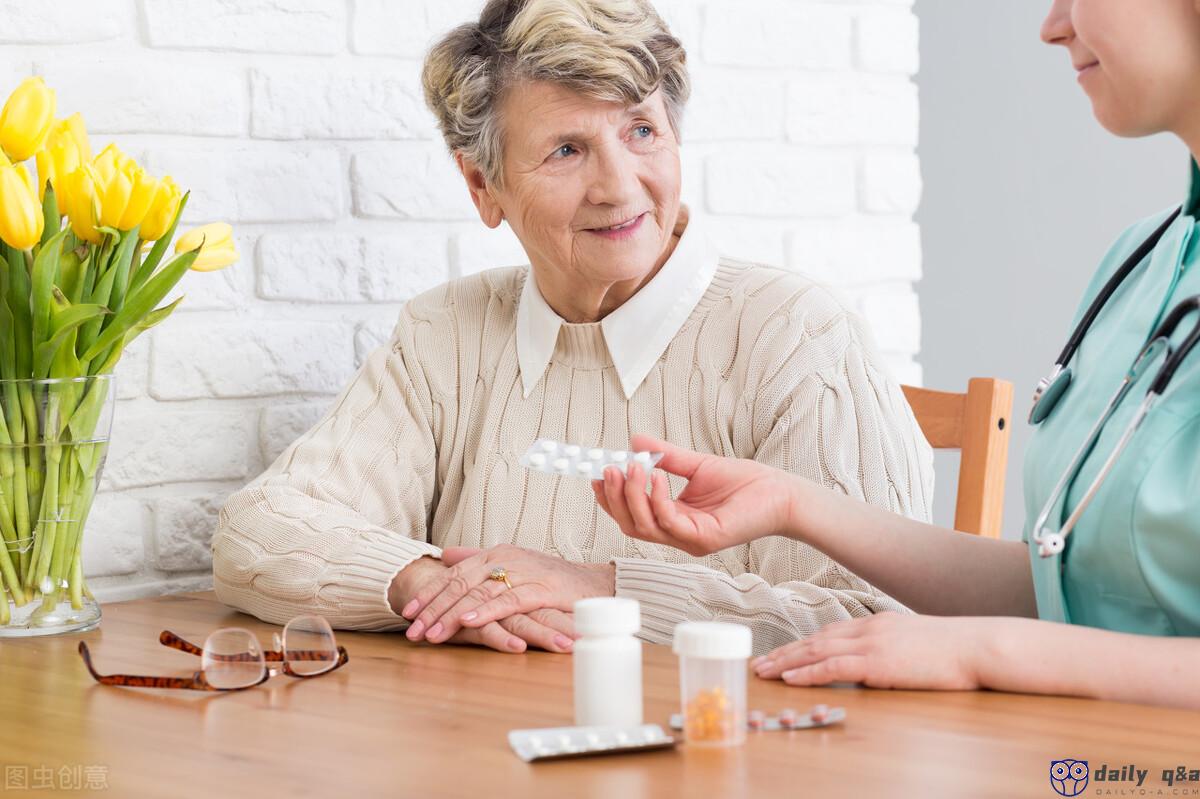Hair dyeing has never been the patent of young people. In order to cover gray hair, middle-aged and

1. Why does Parkinson cause hand tremors?
The reason for Parkinson's tremor is: Parkinson's disease is a chronic degenerative disease of the central nervous system, which can lead to a lack of dopamine in the brain, eventually causing limb tremor, and other symptoms of movement disorders.
Hand shaking is actually divided into many types. When people are particularly excited, nervous, or weak in heart, their hands will tremble. This is called physiological tremor; there are also pathological tremors, including static tremor, postural tremor and so on. The symptom called resting tremor is the manifestation of Parkinson's disease. Static tremor, when a normal person puts his hands on his knees, his hands will not shake. However, even if the hands of Parkinson's patients are placed on their knees, they will still shake involuntarily, and the shaking is regular, shaking 3 times per second, and the movement is like a pill. Postural tremor, postural tremor means that the hand will not shake when it is still, but it will appear when the hand shakes when doing movements or posing a certain posture, such as holding chopsticks or holding a cup. If a person's hands don't tremble normally, but only when holding chopsticks or making movements, it will not usually be Parkinson's disease. Because the tremor of Parkinson's patients is static tremor.
2. Who is susceptible to Parkinson's disease?
1. Age: 4% of people over 80 years old, while only 0.4% of people over 50 years old;
2. Rapid eye movement sleep behavior disorder (RBD): If polysomnography determines that there is RBD, the risk is increased by 130 times; even if only the symptoms of RBD are found by asking the medical history, the risk is increased by 2.3 times.
3. Some siblings who have Parkinson's disease before the age of 50: the risk increases by 7.5 times.
4. Hypoosmia: 4 times the risk
5. Abnormal exercise quantitative monitoring: risk increased by 3.5 times
6. Constipation: the risk increased by 2.2 times
7. Sleep more during the day: the risk increases by 2.2 times
8. Symptoms of hypotension: the risk increases 2.1 times
9. Erectile dysfunction: the risk increased by 1.9 times
10. Depression: 1.8 times the risk
11. Long-term exposure to pesticides: the risk increases by 1.5 times
3. Is Parkinson's disease inherited?
It is true that a part of Parkinson's disease will have a familial onset. Although Parkinson's disease has a genetic predisposition, the vast majority of patients have no family genetic history. Generally 15% of patients have a family history. The explanation for inheritance can only be that certain genetic factors increase the susceptibility to Parkinson's, making the risk of Parkinson's disease higher than those who do not carry it, and they carry genes The greater the number of mutation sites, the greater the risk of disease. Familial Parkinson's is inherited in an autosomal dominant manner, and certain patients can have the disease in every generation in the family, and most of the patients have the onset of the disease when they are young. If someone in the family becomes sick, the incidence of other family members will increase. For those who have Parkinson's disease at home, it is even more necessary to do a good job in the prevention of Parkinson's.
4. What are the pathological changes of Parkinson's disease?
1. Macroscopic view: There is no obvious disease in the early stage, and the substantia nigra of the midbrain, the locus of the pons and the neuropigmentation of the motor nucleus of the vagus nerve can be seen in the late stage. This is a relatively characteristic change of this disease.
2. Under light microscope: it can be seen that the neuromelanocytes in this place are lost, and Lewy inclusion bodies are formed in the remaining nerve cells. The bodies are located in the cytoplasm of nerve cells and are round, with eosinophilic coloring in the center and strong refractive index. The edges are lightly colored.
The most important pathological change of Parkinson's disease is the degeneration and death of dopaminergic neurons in the substantia nigra of the midbrain, which causes a significant decrease in the content of da in the striatum and causes disease. The exact cause of this pathological change is still unclear. Genetic factors, environmental factors, aging, oxidative stress, etc. may be involved in the degeneration and death of pd dopaminergic neurons.
5. What are the manifestations of non-motor symptoms of Parkinson's disease?
1. Sleep problems, nearly 80% of Parkinson's disease patients will have sleep problems of varying degrees.
2. Pain. About 35-80% of Parkinson's disease patients will experience pain. Parkinson's pain will affect a person's daily life and work.
3. Emotional disorder of Parkinson's disease. Emotional disorder is a relatively common problem in Parkinson's disease. It will not only exacerbate the symptoms of the disease, but also bring other physical and mental symptoms. Depression can increase disability, worsen the quality of life, increase the stress of caregivers and overall medical expenses.
4. Gastrointestinal problems, gastrointestinal problems have been recognized as part of the symptoms of Parkinson's disease. These include deterioration of teeth, excessive saliva, difficulty swallowing, slow emptying of the gastrointestinal tract, and constipation.
5. Dementia. About 24-31% of patients will develop dementia. At the same time, the risk increases with age.
6. Parkinson's disease is indifferent. As the disease progresses, the mobility of Parkinson's patients decreases significantly. This may be partly due to dyskinesia, or it may be caused by apathy, a non-motor symptom common to Parkinson's. It is estimated that about 40-45% of Parkinson's patients have apathy.

6. What are the causes of sleep disorders in Parkinson's disease patients?
1. Difficulty falling asleep or waking up early due to poor control of Parkinson's disease symptoms, such as poor control of tremor, often leads to difficulty falling asleep; while in sleep, muscle stiffness causes difficulty in turning over or limb cramps, which often results in patients Wake up early. If this is the case, first consider adjusting the drug and increasing the dose or frequency of anti-Parkinson's disease drugs to control the symptoms of Parkinson's disease and improve sleep disorders.
2. It is an overdose of drugs. Some drugs are taken too late, which may cause excitement in the cerebral cortex and cause insomnia. Therefore, when the patient sees a doctor, he should tell the expert about his sleep problem. The expert understands the medicine and will adjust the medicine according to the patient’s condition. It is best not to add or subtract drugs casually or even stop the drug according to the drug instructions.
Third, it is the mental symptoms of Parkinson's disease patients, such as anxiety and depression. Such emotions will affect the quality of sleep. There is one type of such emotions. The patient thinks about his condition and feels down. If the treatment is effective, his emotions may get better.
7. Why do people with Parkinson's disease have olfactory disorders?
The following factors have been confirmed by research to be related to olfactory disorders in patients with Parkinson's disease:
1. Most studies believe that olfactory impairment is related to mood disorders in patients with Parkinson's disease. Studies have also suggested that apathy is the most important risk factor for hyposmia.
2. Impairment of cognitive function, such as memory and executive ability, is related to decreased sense of smell. Hypoosmia is related to executive ability, decreased attention and decreased processing speed.
3. Patients with olfactory disorders have poor sleep quality. Improving sleep quality can be used as a protective factor for smell.
4. In recent years, some literature reports that smoking is also a protective effect on the sense of smell in Parkinson's disease. Studies have confirmed that smoking can cause hyposmia in patients with non-Parkinson's disease, but not in patients with Parkinson's disease. In some studies, smoking patients in Parkinson's disease patients have better olfactory function than non-smokers.
8. Why do people with Parkinson's disease fall easily?
The abnormal posture, balance disorder, frozen gait and other problems of patients with Parkinson's disease are all causes of frequent falls.
1. Abnormal posture: As Parkinson’s disease progresses, the patient will be in a walking posture of bending forward, which makes it easy to fall.
2. Balance disorders: Parkinson's easily affects the patient's brain area that controls walking and maintains balance, making it difficult for patients to complete normal posture adjustment reflexes.
3. Decreased muscle strength: muscle weakness will cause the patient to bend forward more severely, thus indirectly increasing the risk of falling. In normal life, we must insist on exercising within our power to avoid muscle atrophy and weakness, and also to further avoid joint stiffness and contracture.
4. Freezing gait: The so-called "freezing" means that it is difficult to get started when walking suddenly, unable to move, or starting to walk. The patient will feel as if his feet are stuck to the ground. This phenomenon can last for several seconds or A few minutes can also make the patient feel unstable and increase the risk of falling.
V. Orthostatic hypotension: When we change our position from lying or sitting to standing, blood vessels can be automatically adjusted by the autonomic nervous system to maintain blood pressure stability.
9. What symptoms suggest that Parkinson's disease is progressing?
1. Tremor: Tremor is caused by the rhythmic alternating contraction of the actuating muscles and antagonistic muscles of the limbs. It starts from the distal end of one upper limb and gradually expands to the lower limbs on the same side and the upper and lower limbs on the opposite side.
2. Rigidity: the muscle tension of the actuating muscles and antagonist muscles are increased. As the disease progresses, these postural disorders gradually worsen. In severe cases, the forward bend of the waist can almost become a right angle; in severe cases, the lower jaw can almost touch the chest. Severe muscle rigidity can cause pain in the limbs.
3. Dyskinesia: It is the main cause of disability due to Parkinson's disease. Dyskinesia manifested as: difficulty in starting movement and slowing down of speed, diversity of movement defects, difficulty in movement changes and so on.
4. Disorders of posture maintenance and balance: In the initial report of Parkinson, abnormal posture and gait were the main manifestations of this disease.
10. What are the factors that make Parkinson's disease worse?
1. Irregular medication: This is the most important one. Once Parkinson's disease is diagnosed, long-term medication is required. Many mild patients do not tremble after taking medication or have flexible limb movements and reduce medication by themselves. Some patients are afraid of the side effects of drugs, reduce the drugs by themselves, or seek traditional Chinese medicine for treatment, and the treatment of folk remedies, etc., which leads to aggravation of Parkinson's disease.
2. Irregular life: Frequent fatigue and staying up late have an impact on the body and spirit. It is recommended that patients with Parkinson's disease avoid fatigue and staying up late and maintain a regular schedule.
3. The diet and medication are not well matched: Foods such as protein and fat are needed for human nutrition, but have an impact on the efficacy of levodopa drugs. Therefore, it is only necessary to separate the diet and the medication time without affecting the nutrition required by the body. , Does not affect the efficacy of the drug. It is generally recommended to take the medicine one hour before meals or two hours after meals.
4. Emotional instability: Emotions also have a certain effect on the condition of the disease. Optimistic emotions are conducive to the treatment of the disease. Bad emotions can aggravate the treatment of the disease. It is recommended that patients adjust their mentality and face positively. Family members should also care and understand. Enlighten patients more.

11. What is the prognosis of Parkinson's?
The prognosis of Parkinson's disease: Most of the neurological symptoms of Parkinson's disease gradually intensify over time. The US Department of Health Research Group reported that patients who have used anti-Parkinson's disease drugs for more than 6 years have a subsequent decline in efficacy, which also reflects that Parkinson's disease is progressive. In the course of the disease about 6 years after the onset of the disease, the effect of anti-Parkinson's disease drugs caused by the phenomenon of reduced efficacy, switching phenomenon and other adverse reactions have gradually increased.
Among the 1516 confirmed cases, 23 died. The average age of death was 65.9 years, and the average survival time after the onset was 8 years. Scholars such as Matila have observed the development process of Parkinson's disease. Most of the cases within 6 years of onset are mild disorders, belonging to the first and second grades in the Yahr classification, and more than half of the cases with onset of more than 7 or 8 years It is grade III. However, there are exceptions, even if the symptoms are only unilateral for 10 years. On the contrary, there are also cases with rapid progress, which fall into high-level obstacles 3 to 5 years after the onset of disease. The cases that rapidly worsen after the onset like this are mostly elderly patients with atherosclerosis. The cause of death of Parkinson's disease patients is caused by complications.
12. How to judge the severity of Parkinson's?
The Hoya classification is a commonly used clinical method to judge the severity and classification of Parkinson's. The Hoya classification is a widely used clinical scale to assess the severity of the disease in patients with Parkinson's disease. It is a standardized tool for clinical research, and UPDRS score is two important scales for PD clinical research. The clinical application is convenient, and the assessment is simple and fast. Even non-dyskinesia specialists can easily use this scale. Using a standardized scale is undoubtedly the same academic language of clinicians, and there will be a tacit understanding of clinical research and fellow communication.
13. What is drug-induced Parkinson's syndrome?
Drug-induced Parkinson's syndrome refers to a disease that has symptoms and signs similar to Parkinson's after taking a certain drug. Drug-induced Parkinson’s syndrome is similar to Parkinson’s disease in terms of symptoms, but the former is the result of long-term use of the above-mentioned drugs. Symptoms usually appear 4 to 6 months after medication, but there are also as short as a few days and up to a year. There are great individual differences among patients. Symptoms fluctuate with the addition or subtraction of the drug, and get better after stopping the drug, and continue to use the drug to aggravate. Once symptoms appear, compared with Parkinson's disease, the disease progresses faster and gradually worsens. Muscle rigidity, bradykinesia are obvious, and resting tremor is less, but the cases caused by antidepressants and antiarrhythmic drugs are mostly resting tremor. . Symptoms are mostly bilateral, but some cases are unilateral. Anti-Parkinson's syndrome drug treatment is not obvious. Drug-induced Parkinson's disease and primary Parkinson's disease are difficult to distinguish clinically. It is important to rely on the history of taking antipsychotic drugs.
14. What are the common adverse reactions of anti-Parkinson's disease drugs?
1. Anticholinergic drugs. Common types of drugs include trihexyphenidyl hydrochloride tablets, common dry mouth, blurred vision, etc., occasionally tachycardia, nausea, vomiting, urinary retention, constipation, etc. Long-term application may cause drowsiness, depression, memory loss, hallucinations, and clouded consciousness.
2. Exogenous dopamine supplementation. Because dopamine is difficult to enter the brain through the blood-brain barrier, it will be clinically prepared as its prodrug levodopa for exogenous supplementation. Levodopa decarboxylates in the brain to form dopamine to alleviate the symptoms of Parkinson's disease. Clinically, levodopa compound preparations are widely used, and common drugs include Xining, Metopa, and Dalingfu.
3. COMT inhibitors, COMT inhibitors that act on the periphery, are usually used together with levodopa to improve the utilization of levodopa. The common representative medicine is Kedan. In clinical trials, common adverse reactions of Kedan include dyskinesia, nausea and abnormal urine color, and adverse reactions often occur at the beginning of treatment.

15. Can a Parkinson's patient drive after treatment?
Having Parkinson's disease does not mean that you cannot drive. However, patients with Parkinson's disease should be aware that Parkinson's disease can seriously impair the ability to drive safely. The motor disability of Parkinson's disease includes the inability to respond quickly to changing environments and excessive tremor, dyskinesia or stiffness is not suitable for driving. Some Parkinson's disease patients have cognitive dysfunction, so driving is very dangerous. Drugs that cause daytime sleepiness can also affect a person's ability to drive safely. Therefore, we do not recommend that people with Parkinson's disease drive alone. Reasons that affect the driving of Parkinson's disease patients:
1. The patient's limbs and hands will tremble even when it is still. Muscle stiffness leads to poor control of the patient's head movement.
2. The ability to complete the action of rotating the steering wheel and to respond quickly (such as stepping on the brake or accelerator) when facing danger will be restricted by the slow response and freezing effect.
3. When visual impairment occurs, the patient's ability to observe the surrounding environment and follow the car will be reduced.
4. The drugs taken may cause drowsiness or mental symptoms.
Therefore, it is recommended that patients with Parkinson's disease avoid driving.
16. What are the complications of Parkinson's?
1. Injury is a non-negligible complication of Parkinson's disease. With the development of the disease, tremor, stiffness, and coordination dysfunction will gradually affect motor function. When the foot encounters obstacles, it is easy to fall and even fractures and other injuries.
2. Mental disorders and mental impairment are often complicated, especially in advanced patients. Parkinson’s disease manifests limb tremor, stiffness, clumsiness and lack of facial expressions and mask faces, as well as slurred speech, single intonation, and reduced volume. Drooling, etc., make patients feel degraded, often have a sense of inferiority in their psychology, reluctant to participate in social activities, refrain from going to public places, neglect interpersonal communication, and can also see insomnia, anxiety, and anxiety during treatment and the development of the disease. Depression, dementia, etc.
3. Due to autonomic nerve dysfunction, complications of the digestive system occur, which are manifested as: ① nutritional disorders and water and electrolyte imbalances, which are related to dysphagia, reduced diet, and insufficient fluid supplementation ② esophagus dilatation, false diverticulum formation, esophageal dilator Poor dysfunction, burning sensation behind the sternum, radiological evidence of stomach, esophageal reflux, ③ delayed gastric emptying, some statistics account for about 55%, manifested as postprandial fullness, nausea, and vomiting.
17. What are the drugs used to treat Parkinson's?
1. Anticholinergic drugs: Conventional drugs trihexyphenidyl hydrochloride, mainly suitable for patients with obvious tremor and younger age.
2. Amantadine: Amantadine, a conventional drug, has a mild improvement effect on hypokinesia, stiffness, and tremor, and may be effective for dyskinesia.
3. Monoamine oxidase B inhibitors: conventional drugs siglinine, midopir, and Jinsiping are used to treat new-onset and young patients with Parkinson's disease, and can also assist compound levodopa in the treatment of advanced patients.
4. DR agonists: Conventional drugs Tesuda and Semfrol can directly stimulate dopamine receptors and exert their effects. They are the first-choice piribedil sustained-release tablets for patients with early Parkinson's disease.
5. Compound levodopa, conventional medicines Medopa and Sinin, need to gradually increase the dosage according to the condition.
18. What diseases are Parkinson easily confused with?
1. Progressive supranuclear palsy is a common dyskinesia-myotonia syndrome. Among 100 patients diagnosed with Parkinson's disease, 5 may have progressive supranuclear palsy. In addition to the main symptom of Parkinson's disease-muscle rigidity, there are often obvious balance disorders, so often falls. Unlike Parkinson's disease, it has poor sensitivity to drugs. The disease progresses faster than Parkinson's disease.
2. Multiple system atrophy, similar to Parkinson's disease, but usually without tremor, but mainly manifested as autonomic nervous system symptoms, such as orthostatic hypotension, bladder and rectal dysfunction, and impotence;
3. Cortical basal ganglia degeneration, similar to progressive supranuclear palsy, but the difference is that progressive supranuclear palsy starts on both sides at the same time, cortical basal ganglia degeneration first starts on one side, and cortical basal ganglia degeneration is more progressive Supranuclear palsy is more prone to muscle rigidity.

19. What is the importance of taking medication on time for Parkinson's patients?
The importance of taking medication on time for Parkinson's patients is as follows: Early medication must be standardized, no luck, and long-term treatment needs to be prepared. Once Parkinson’s disease is diagnosed and affects normal life, long-term drug treatment is required. Most patients think that they have received “specific drugs”. Due to the progressive nature of Parkinson’s disease, their condition gradually worsens over time, generally in drug treatment3 -After the honeymoon period of 5 years, the effect will get worse and worse, and side effects such as abnormalities will gradually appear. Therefore, standard drug treatment for patients with early Parkinson's disease can delay the progression of the disease and prolong the honeymoon period of drug treatment. Drug standard treatment first needs to understand the best timing of drug treatment: the same degree of limb tremor may have a significant difference in impact on a retired Parkinson's disease patient and a busy middle-aged Parkinson's disease patient. The former can appropriately postpone the time to start taking medication, while the latter may start treatment in time.
20. How to care for Parkinson's patients?
1. Parkinson's should be treated early, and long-term medication is required, and attention should be paid to the patient's medication effect and side effects of the medication, so that the doctor can adjust the dosage and type of medication in time.
2. Encourage early-stage patients to do more active exercises, continue to work as much as possible, and cultivate hobbies.
3. In severe Parkinson's patients, swallowing, choking and choking after eating are all swallowing problems. Generally, mushy food is easier to swallow and less coughing. Pay great attention to this in Parkinson's care.
4. Encourage early Parkinson's patients to continue working as much as possible and cultivate hobbies. Enhance physical fitness, delay aging, and prevent atherosclerosis, which can play a positive role in Parkinson's care.
5. In terms of diet, Parkinson's care can prepare cereals, vegetables and fruits for Parkinson's patients.
Copyright notice
This article only represents the author's point of view, not the standpoint of this station.
This article is authorized by the author and cannot be reproduced without permission.